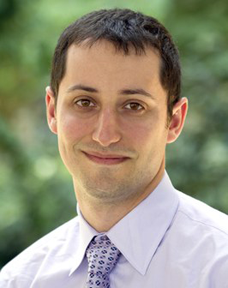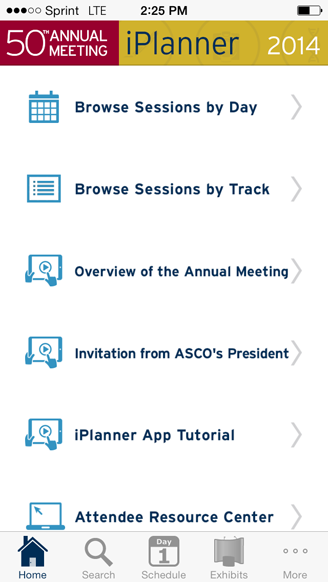Planning Your ASCO Meeting
As a radiation oncologist in training with interests in multiple disease sites, geriatrics, and health services research, I find ASCO extremely educational, motivating, and often frustrating: There is absolutely no way to attend every session of interest.
Noam VanderWalde, MD

Screenshot of iPlanner app.

As I sit in the plane on the tarmac, waiting for my flight to take me to my third ASCO meeting, I realize that I am prepared. I know what to expect.
Many of my senior mentors often lament that the days are over when ASCO was held in a hotel and they could simply walk across the hallway between the lung session and the breast session to listen to the presentations they found interesting. Obviously, ASCO has grown significantly since the 1970s. It is now held in one of the biggest conference centers in the country, and if you want to run between sessions you have to make sure to wear comfortable shoes and give yourself about 20 minutes to go the two city blocks it will take you to get across McCormick Place.
The planners at ASCO understand this and have scheduled “tracks.” Most of these tracks are related to clinical sites (ie, gastrointestinal colorectal, gastrointestinal non-colorectal). This makes it easier for oncologists who treat a particular disease site to make it to the majority of the sessions that are important to them. There are also specialty tracks, such as geriatric oncology or health services research, not to mention special education sessions within each of these tracks. This can make it quite difficult to navigate the ASCO meeting, especially if you are someone who has interests in multiple disease sites and specialties.
As a radiation oncologist in training with interests in multiple disease sites, geriatrics, and health services research, I find ASCO extremely educational, motivating, and often frustrating: There is absolutely no way to attend every session of interest. Additionally, it can often be difficult to identify the sessions that will be of interest to radiation oncologists. We have to comb through the abstracts to find pertinent presentations.
Admittedly, during my first ASCO meeting, I had no idea what I was doing. I had been to a couple of smaller meetings in the past and thought I knew how to navigate a medical meeting. When I arrived at McCormick Place, I was in awe. I spent about 2 to 3 days just trying to figure out what I should be doing.
This year, I have planned ahead. I have downloaded the ASCO 2014 iPlanner (see image) and have added the sessions I want to attend to my personal schedule. Some of these sessions occur at the same time and I know I won’t attend everything I want, but that is to be expected (after all, that is what the Virtual Meetings are for). Additionally, the iPlanner is a big help in navigating the well-planned shuttle system, which will not only take you to your hotel, but if you know what you are doing, can take you pretty close to the restaurant of your choosing.
For those attending their first ASCO meeting, or their 30th, I wish you all good luck and a great meeting. I hope you find it as educational, motivational, and yes, even as frustrating as I do. After all, if you could make it to every important presentation at the preeminent international cancer meeting of the year, it would not bode well for the level or scope of cancer research being done.
But, if you haven’t already planned out some of your meeting, I recommend you take some time to do so-there's still time. This way you can at least limit your frustration.